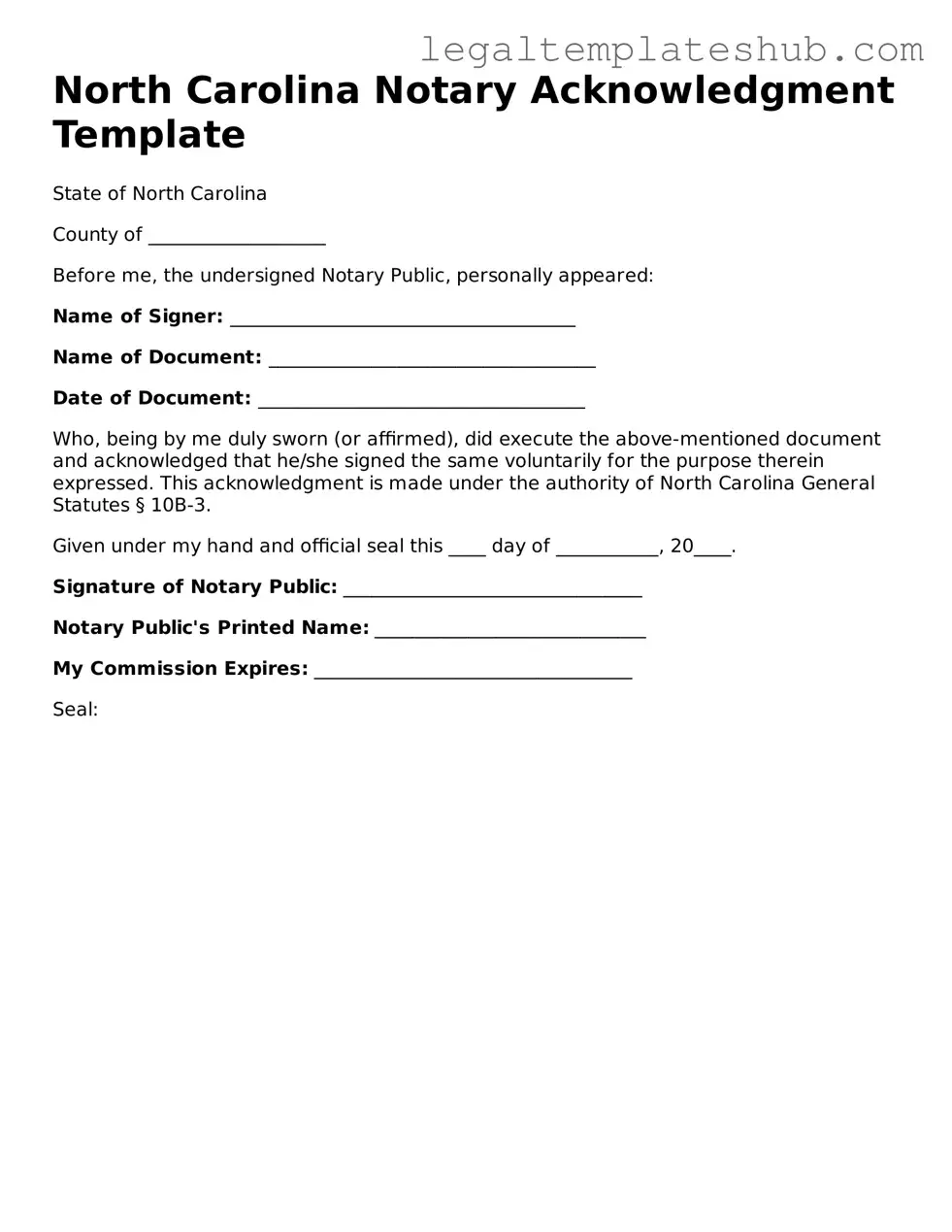Instructions on Filling in North Carolina Notary Acknowledgement
Once you have the North Carolina Notary Acknowledgement form in hand, you will need to complete it accurately to ensure it is valid. Follow these steps carefully to fill out the form correctly.
- Begin by entering the date at the top of the form where indicated.
- Next, provide the name of the person whose signature you are notarizing. This is typically the individual who will sign the document.
- In the next section, write the name of the notary public. Make sure it matches the name on your notary commission.
- Fill in the county where the notarization is taking place. This should be the county where you are commissioned as a notary.
- Include the state, which will be North Carolina, in the appropriate section.
- Have the signer present their identification. Confirm their identity before proceeding.
- Once the signer has provided their ID, ask them to sign the document in your presence.
- After witnessing the signature, complete the notary section. This includes signing your name and affixing your notary seal.
- Finally, review the completed form for any errors before it is submitted or filed.
